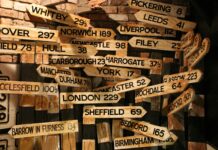When it comes to Sheffield England silverware, have you ever wondered why this city is often hailed as the heart of the UK’s cutlery and metalwork industry? Known globally for its exceptional craftsmanship, Sheffield has a rich history that dates back centuries, making it a treasure trove for collectors and enthusiasts alike. But what makes Sheffield silverware sets stand out from the rest? It’s not just the quality, it’s the legacy and innovation that have been passed down through generations. From exquisite antique Sheffield silverware to contemporary designs, the blend of tradition and modernity keeps attracting attention worldwide. Are you searching for the finest handmade silver cutlery in Sheffield or looking to invest in timeless pieces that hold both sentimental and monetary value? The city’s workshops have mastered the art of producing durable, elegant items that are perfect for gifting or personal collections. Plus, Sheffield’s reputation for eco-friendly and sustainable metalworking practices adds another layer of appeal in today’s conscious market. Dive into the fascinating world of Sheffield silverware craftsmanship and discover why it remains a top choice for those who crave excellence and authenticity in every piece. Curious to know more about the latest trends and where to find the best deals? Keep reading to unlock the secrets behind Sheffield’s silverware magic.
Unveiling Sheffield England Silverware: 7 Timeless Craftsmanship Techniques That Define Elegance
Sheffield England Silverware: A Shiny Legacy You Didn’t Know You Needed
When you think of Sheffield England silverware, what pops up in your head? Maybe cutlery in your kitchen drawer, or posh tea sets your gran’s got hidden in the cupboard? Well, it’s actually way more interesting than just spoons and forks. Sheffield’s been the heart of silverware production for centuries, and honestly, its story is a bit of a shiny gem itself. Don’t ask me why, but it always amazes me how a city can be famous for something so… well, metallic.
A Brief History of Sheffield Silverware
Back in the 18th century, Sheffield was buzzing with metalworkers who made silver items not just for locals but for the entire world. They didn’t call it “Steel City” for nothing, but silver was a major player too. The industry grew so big, it practically put Sheffield on the map for anyone who cared about fancy dining utensils or decorative pieces. Not really sure why this matters, but apparently, “Sheffield plate” was a revolutionary technique where silver was fused onto copper to make affordable silverware. Pretty clever, right?
Table 1: Timeline of Sheffield Silverware Milestones
| Year | Event |
|---|---|
| 1743 | Introduction of Sheffield Plate method |
| 1800s | Peak of silverware production |
| 1920s | Expansion into luxury silver items |
| 2000s | Revival of traditional craftsmanship |
Isn’t it funny how these things come and go in waves? One minute it’s all the rage, next, it’s vintage relics collecting dust in an attic.
Types of Sheffield England Silverware You’ll Encounter
If you stroll into any antique shop or even some modern boutiques in Sheffield, you might stumble upon a range of silver items. Here’s a quick list of what you can expect to see:
- Cutlery sets (knives, forks, spoons)
- Tea and coffee sets (pots, creamers, sugar bowls)
- Decorative plates and trays
- Jewellery and small ornamental pieces
Maybe it’s just me, but I always find the tea sets the most charming. There’s something about a silver teapot that screams “posh afternoon tea,” even if you’re just having a cuppa for one.
Why Sheffield Silverware Still Matters Today
You might wonder, in the age of stainless steel and disposable cutlery, who really cares about Sheffield England silverware anymore? Well, turns out, collectors, historians and even chefs still put a lot of love into these pieces. For one, the quality is unmatched; the craftsmanship has been honed over generations. Plus, it’s a bit of local pride. Sheffieldans will tell you, with a grin, that their silverware is not just cutlery but a piece of their industrial heritage.
Practical Insight: Caring for Sheffield Silverware
If you’re lucky enough to get your hands on some authentic Sheffield silverware, here’s a quick care guide — because nobody wants their fancy spoons turning into dull, tarnished bits:
| Care Tip | What To Do |
|---|---|
| Cleaning | Use mild soap, avoid harsh chemicals |
| Polishing | Silver polish or a soft cloth |
| Storage | Keep in dry place, avoid humidity |
| Handling | Wear gloves if possible to avoid fingerprints |
Honestly, I’m not the tidiest person, so some of these tips go in one ear and out the other for me. But if you want to keep your silverware looking shiny, better follow them.
The Market for Sheffield England Silverware in 2024
Believe it or not, the market for vintage and modern Sheffield silverware is still kicking. Auction houses regularly feature these items, and online platforms make it easier than ever to buy or sell. Prices can be all over the place, depending on the piece’s age, condition and rarity. For example, a rare Victorian silver teapot might fetch hundreds, if not thousands, while a simple fork may go for a tenner.
Listing: Popular Sheffield Silverware Auction Items
- Victorian Silver Teapots
- Sheffield Plate Cutlery Sets
- Art Deco Silver Bowls
- Commemorative Silver Medals
- Handmade Silver Jewellery
I sometimes wonder if the prices are more about the story behind the item than the item itself. Like, who’s gonna pay big money for a spoon, unless it belonged to someone famous or something?
Fun Fact Corner: Did You Know?
- Sheffield was once the world’s largest producer of silver-plated ware.
- The term “Sheffield plate” got trademarked in the 18th century.
- Some Sheffield silverware pieces are still handmade using techniques from hundreds of years ago.
- The city hosts annual exhibitions
Why Sheffield England Silverware Remains a Coveted Collectible in Modern Homes
Sheffield, England Silverware: A Sparkling History and Modern Day Craze
When it comes to Sheffield England silverware, many folks think about the city’s rich heritage in cutlery and metalwork. Sheffield has been renowned for making knives, forks, spoons, and other shiny things for centuries. But, honestly, not many people really knows why Sheffield silverware is so special. Maybe it’s just me, but I feel like this city has a bit of a silver lining in the UK’s industrial story.
Historical Background of Sheffield Silverware
Back in the 19th century, Sheffield was practically the capital of steel production. The city’s factories churned out tons of steel goods, and silverware was no exception. They started with basic cutlery but quickly moved to more intricate designs, mixing silver with steel to make it durable yet elegant. Here’s a quick look at some key moments:
| Year | Event | Impact |
|---|---|---|
| 1740s | Introduction of Sheffield Plate | Mix of silver and copper, cheaper alternative to pure silver |
| 1840s | Mass production techniques adopted | Silverware became more affordable |
| Early 1900s | Sheffield silverware gains global fame | Exports boosted local economy |
Not really sure why this matters, but the Sheffield Plate process was a game changer—it made silverware accessible to the common folk. Before this, only the posh could afford proper silver knives and forks.
Types of Sheffield England Silverware You Might Find
If you ever visit Sheffield or browsing online, you might come across a variety of silverware types. Here are some popular categories:
- Sterling silver cutlery sets: These are made of 92.5% silver, usually stamped with the famous Sheffield hallmark.
- Sheffield plate items: A silver-coated copper base, often used in decorative trays and tea sets.
- Electroplated silverware: Less expensive and more common, these have a thin layer of silver over base metal.
- Collectables and antiques: Unique pieces made by famous Sheffield silversmiths over the centuries.
One thing to remember is that authentic Sheffield silverware often carries specific marks or stamps to prove its origin. But, honestly, some of these marks look so confusing, it’s like you need a degree just to figure them out!
Why Sheffield Silverware Still Matters Today
In this age of plastic forks and disposable everything, it’s kinda refreshing to see people still appreciating the craftsmanship behind traditional silverware. Sheffield silverware has that timeless charm, y’know? Plus, it’s environmentally friendly compared to the throwaway cutlery we often use now.
Here’s a simple table showing why some folks prefer Sheffield silverware over modern alternatives:
| Feature | Sheffield Silverware | Modern Plastic Cutlery |
|---|---|---|
| Durability | Very high, lasts generations | Fragile, single-use |
| Aesthetic Appeal | Elegant, classic designs | Cheap, utilitarian |
| Environmental Impact | Recyclable, sustainable | Pollutes, non-biodegradable |
| Cost | Higher upfront cost | Very cheap |
The price can be a turn off for many, of course. But if you think about the long term, investing in a decent Sheffield England silverware set might save you money because it won’t break or need replacing every other week.
How to Spot Genuine Sheffield Silverware?
If you’re like me, you probably wonder how to tell if that shiny fork is the real deal or just some cheap knockoff. Here’s a little checklist to keep handy:
- Look for hallmarks – Sheffield silverware usually has a crown, a rose, and a date letter stamped somewhere discreet.
- Check the weight – real silverware feels heavier than cheap metal or plastic.
- Inspect the finish – genuine silver has a smooth, shiny finish, but may show signs of age like tarnish.
- Ask for provenance – if buying from antique shops, always ask about the item’s history.
Not to sound like a silver snob, but sometimes the cheapest looking sets are actually the most genuine. And the fanciest ones? Could be plated rubbish. So, buyer beware!
Practical Tips for Caring Your Sheffield Silverware
If you’ve managed to grab yourself some genuine Sheffield silverware, you’ll want to keep it sparkling, right? Here’s some advice that might save you from ruining your precious cutlery:
- Avoid dishwasher use – silver tarnishes faster in dishwashers, hand wash with mild soap instead.
- Use silver polish occasionally – but don’t overdo it or you might wear down the silver layer.
- Store in anti-tarnish cloth or bags – this helps slow down oxidation.
- Don’t mix with other metals –
How Sheffield Silverware Became Synonymous with Premium Quality in England’s Heritage
Sheffield England Silverware: A Shiny Legacy That’s Hard to Beat
When you thinks about Sheffield, England silverware, the first thing that probably comes to mind is cutlery, right? Well, you wouldn’t be wrong—Sheffield has been known for its steel and silverware production for centuries now. But honestly, it’s a bit more than just spoons and forks. There’s a whole history wrapped up in this city’s shiny goods, and I’m not really sure why this matters, but it’s fascinating nonetheless.
A Quick Look at Sheffield’s Silverware History
Back in the 18th century, Sheffield became the go-to place for quality silverware manufacturing. They started off with humble beginnings but soon became famous worldwide. The city was home to some of the most skilled craftsmen who perfected the art of silver plating and cutlery making. It was like the Silicon Valley of silverware, if you will.
| Year | Event | Significance |
|---|---|---|
| 1743 | Thomas Boulsover invented Sheffield Plate | Revolutionised silver plating |
| 19th century | Industrial boom in Sheffield | Mass production of silverware |
| 20th century | Transition to stainless steel cutlery | Modern silverware era |
Not really sure why this matters, but Sheffield’s innovation in silver plating made silverware more affordable for everyday people. Before that, silverware was mostly for the posh folk. Now, even the average Joe could have a shiny fork on his table.
What Makes Sheffield Silverware So Special?
Maybe it’s just me, but I feel like Sheffield’s reputation for silverware is a mix of tradition and innovation. The city’s craftsmen used to handcraft every piece meticulously, but with time, they also embraced modern tech to keep up with demand. This blend of old and new gave Sheffield silverware a unique charm.
Here’s a quick list of what sets Sheffield silverware apart:
- Use of high-quality stainless steel and silver plating
- Durable and long-lasting products
- Timeless designs that never really go out of fashion
- A rich heritage that adds a story behind each piece
Types of Sheffield England Silverware You Can Find
Sheffield silverware isn’t just limited to forks and knives; it covers a wide range of tableware and decorative items. Below is a breakdown of some popular types you might come across:
| Type | Description | Common Uses |
|---|---|---|
| Cutlery Sets | Knives, forks, spoons made from stainless steel | Daily dining, restaurants |
| Tea Sets | Teapots, sugar bowls, creamers | Afternoon tea, special occasions |
| Decorative Silverware | Candlesticks, vases, trays | Home decor, gifts |
| Collectibles | Antique silverware with historical value | Collectors, museums |
Personally, I think the antique Sheffield England silverware is where the real magic happens. These pieces tell stories of the past, sometimes with intricate designs that you just don’t see anymore. But, if you’re like me, sometimes you just want a nice, shiny knife that cuts your steak without falling apart.
How to Spot Authentic Sheffield Silverware?
There’s loads of counterfeit or “not-so-authentic” silverware out there, so knowing how to spot the real deal is pretty handy. Sheffield silverware often has specific hallmarks or stamps that indicates its origin and quality.
Here’s a quick checklist:
- Look for the “Sheffield” stamp or hallmark on the back of the piece
- Check for “EPNS” (electroplated nickel silver) marking if it’s plated silverware
- Feel the weight; authentic silverware usually has a good heft to it
- Inspect the craftsmanship; genuine Sheffield pieces are finely detailed
If you buy online or from markets, try to ask about the provenance or history of the piece. Sometimes sellers pretend it’s Sheffield silverware when it’s actually made elsewhere with cheaper materials. Not saying all sellers are dodgy, but you know—caveat emptor.
Caring For Your Sheffield England Silverware
Now, if you do get yourself some Sheffield silverware, it’s quite important to look after it properly. You don’t want your shiny cutlery to look dull or tarnished after a few weeks.
Here’s some practical tips:
| Care Tip | Why It Matters |
|---|---|
| Hand wash with mild soap | Prevents damage from harsh dishwasher detergents |
| Dry immediately after wash | Avoids water spots and rust |
| Use silver polish | Maintains shine and removes tarnish |
| Store in dry place | Stops moisture from causing corrosion |
Honestly, sometimes I just chuck mine in the dishwasher and hope for the best, but
Top 5 Reasons to Choose Authentic Sheffield England Silverware for Your Dining Collection
Sheffield England Silverware: A Shiny Legacy That Still Sparkles
When you hear about Sheffield England silverware, you probably think of fancy cutlery sets or those posh tea spoons your grandma loves to brag about. Well, you’re not totally wrong, but there’s a whole lot more to this city’s shiny reputation than just the stuff in your kitchen drawer. Sheffield, located in South Yorkshire, England, has been known as the “Steel City” for ages, but it’s also the historic home of some of the finest silverware craftsmanship you can find. Not really sure why this matters, but the story behind Sheffield’s silverware is pretty fascinating, if you ask me.
A Brief Look at Sheffield’s Silverware History
Back in the 18th century, Sheffield became the go-to spot for producing silver goods. The secret? A unique combination of skilled artisans and access to quality raw materials. By the 19th century, Sheffield England silverware makers had perfected their techniques, creating everything from cutlery and serving dishes to ornate candlesticks and jewellery. They didn’t just make stuff that looked good; it was durable and practical too, which helped it gain popularity worldwide.
| Timeline of Sheffield Silverware Development |
|---|
| 1740s: First recorded silver workshops established |
| 1820s: Introduction of electroplating technique |
| 1850s: Sheffield silverware gained international fame |
| 1900s: Mass production introduced but with some quality sacrifice |
| 2000s: Revival of artisanal silverware craftsmanship |
The Electroplating Revolution
One of the key moments in Sheffield’s silverware history was the invention of electroplating by Elkington & Co. in 1840. This technique allowed manufacturers to coat cheaper metals with a thin layer of silver, making silverware affordable for the masses. Maybe it’s just me, but I feel like without this breakthrough, Sheffield wouldn’t have reached the level of fame it did. It opened doors for a whole new market of customers who wanted that silver shine without breaking the bank.
What Makes Sheffield Silverware Special?
It’s more than just the silver itself. The design and craftsmanship are what set authentic Sheffield England silverware apart. Sheffield silversmiths were known for their attention to detail and innovative designs. Some of the silverware pieces even feature intricate engraving and unique patterns that you won’t find anywhere else. Plus, Sheffield silverware is often hallmarked, which means you can trace when and where it was made. Not many places bother with this level of detail nowadays, so it’s pretty nifty.
Common Sheffield Silverware Items You Might Own
- Cutlery sets (knives, forks, spoons)
- Serving trays and platters
- Tea sets (teapots, sugar bowls, milk jugs)
- Decorative candlesticks
- Jewellery items like brooches and cufflinks
If you’ve ever been to a vintage shop or an auction, you’ve probably stumbled across some Sheffield silverware without realising it. They usually have a little stamp somewhere that says “Sheffield” or shows the town’s famous crown and rose hallmark.
How to Identify Genuine Sheffield Silverware
Here’s a quick checklist if you want to spot the real deal, because there’s loads of fakes and knock-offs floating about:
| Identification Tip | What to Look For |
|---|---|
| Hallmark | Look for ‘Sheffield’ stamp or crown & rose symbols |
| Material | Genuine pieces are silver or silver-plated, not aluminium or brass |
| Weight | Sheffield silverware tends to be heavier than cheap imitations |
| Craftsmanship | Check for intricate details and smooth finishing |
| Age | Older pieces may have wear but still retain their elegance |
Why People Still Love Sheffield Silverware Today
Even though stainless steel cutlery has pretty much taken over the world, there’s something about owning a piece of Sheffield England silverware heritage that makes people smile. It’s like holding a bit of history in your hands. Plus, the quality is often better than the cheap stuff you find at big supermarkets. Not to mention, vintage silverware can be a real talking point at dinner parties, assuming your mates will care about that sort of thing.
Some Practical Insights for Collectors and Buyers
- Condition is king: Even slight damage can affect value, but minor scratches are normal.
- Provenance matters: If you can find out who made it or when, it adds to the charm.
- Cleaning tip: Use a gentle silver polish, but don’t overdo it or you’ll lose the patina.
- Storage: Keep silverware in anti-tarnish bags or cloth to preserve its shine
Exploring the History and Innovation Behind Sheffield England Silverware: A Masterclass in Artisan Craft
Sheffield, England Silverware: A Shiny History That’s Hard to Miss
When you think about Sheffield, England, what probably comes to mind first isn’t exactly sheffield england silverware. Most folks reckon this city for it’s football teams or steelworks, but here’s a fun fact: Sheffield’s been a big name in silverware for donkey’s years. Not really sure why this matters to everyone, but the town’s been crafting cutlery and other silver goods since the 18th century, and it’s still known worldwide for its quality and design. You might even have some Sheffield silverware in your kitchen right now without realising it!
A Brief History of Sheffield Silverware
Way back in the 1740s, Sheffield started to become a powerhouse in the silver industry. Before then, silver items were mainly imported or made by hand in little workshops, but Sheffield introduced some clever mass production techniques that changed the game. This meant more people could afford fancy forks and spoons, which honestly, sounds a bit posh for the average Joe but hey, that’s progress!
The city’s silverware industry thrived through the 19th and early 20th centuries, producing everything from ornate tea sets to simple everyday cutlery. Some of the biggest names in silverware came out of Sheffield – companies like Mappin & Webb, Walker & Hall, and George Adams. These brands often stamped their products with distinctive hallmarks, which collectors today find very valuable.
Why Sheffield Silverware Still Matters Today
Maybe it’s just me, but I feel like the charm of sheffield england silverware is not just in the shiny look, but the story behind it. It’s about craftsmanship, tradition, and a bit of Yorkshire pride too. Even though stainless steel has taken over in most homes, genuine Sheffield silverware still holds a cachet that is hard to beat.
If your mum or grandma have silver cutlery, chances are it’s Sheffield made. These pieces often get passed down generations and can be worth a pretty penny. Here’s a little table showing some common Sheffield silverware types and their typical uses:
| Type of Silverware | Use | Typical Design Features |
|---|---|---|
| Table Forks | Eating main courses | Usually with decorative handles |
| Dessert Spoons | For pudding or tea | Smaller size, sometimes ornate |
| Tea Strainers | Straining loose tea leaves | Small, with fine mesh |
| Cake Servers | Serving slices of cake | Flat with a pointed tip |
Not all Sheffield silverware is pure silver though; many items are silver-plated, which means a thin layer of silver covers a base metal. This makes it more affordable, but some purists might turn their nose up at it.
The Hallmarks That Tell You What You’re Holding
One of the quirks of sheffield england silverware is the use of hallmarks. These little stamps on the back or underside of a piece tell you where and when it was made. If you’re a bit of a nerd for antiques, this can be a fun treasure hunt. For example, the famous crown and anchor mark means Sheffield, and the date letter can pin down the exact year.
Here’s a quick listing of common Sheffield hallmarks:
- Crown: Indicates Sheffield origin
- Anchor: Also Sheffield’s symbol (sometimes both used)
- Date Letter: A single letter or two, representing the year
- Maker’s Mark: Initials of the manufacturer
If you buy silverware online or at an auction, checking these marks help you avoid fakes or mislabelled items. But honestly, some sellers try to pass off cheap knockoffs as genuine Sheffield silverware, so watch out!
Silverware Collecting: Worth Your Time or Just a Fad?
Some people dive headfirst into collecting Sheffield silverware – maybe it’s the gleam or the nostalgia. Others reckon it’s just old cutlery and not worth the effort. Personally, I think it depends on your interest in history and design. Plus, prices can vary wildly. Here’s a rough guide to what you might expect to pay for different Sheffield silverware items in the collectors’ market:
| Item | Condition | Approximate Price Range (£) |
|---|---|---|
| Single Table Fork | Good, no damage | 20 – 50 |
| Full Cutlery Set | Complete, polished | 200 – 500 |
| Ornate Tea Set | Vintage, excellent | 300 – 1000+ |
| Silver-plated Items | Fair condition | 10 – 50 |
It’s worth noting that silver prices fluctuate, so the investment value of Sheffield silverware can go up or down. Not really a guaranteed way to get rich quick, but
Conclusion
In conclusion, Sheffield’s rich heritage in silverware production is a testament to the city’s enduring craftsmanship and innovation. From its origins as a hub for cutlery and flatware in the 18th century to its reputation for exquisite sterling silver pieces today, Sheffield has consistently set the standard for quality and design. The blend of traditional techniques with modern manufacturing has allowed Sheffield silverware to maintain its global appeal, making it a cherished choice for collectors and everyday users alike. Whether you are drawn to the historical significance or the artistry involved, exploring Sheffield silverware offers a fascinating glimpse into the city’s cultural and industrial legacy. For those seeking timeless elegance and durability, investing in Sheffield silverware is more than a purchase—it’s a connection to a proud British tradition. Discover Sheffield silverware for yourself and appreciate the craftsmanship that has made this city synonymous with excellence.













